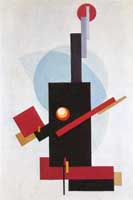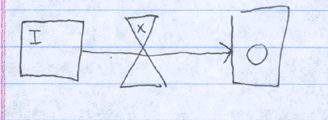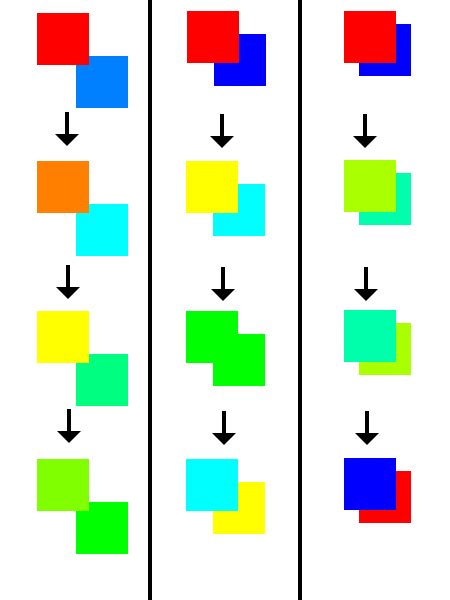|
|||||||||
| The Constructivist Modeler | Java Applet | Aug 1999 | ||
Demo VersionsThe relationship between rates and levels will be represented by overlapping. A basic example of flow graph with two levels - labeled I(nput) and O(utput) - and one constant rate - labeled X, can be represented by two squares (I know that I said that rates were represented by triangles before, however this is only rates that have cause and effect arcs association with them, otherwise a graphically valid composition such as 2 squares overlapping would be undefined in the model).The rate constant is determined by the amount of overlap of the squares. So for example, a small over lap (such as in the first column in the image below) results in a small rate constant and thus a relatively slow flow from I to O and thus a more gradual shift in color. A large overlap (such as in column 3) results in a quicker change in numerical value and color value.
The equations for this model would be: I = I - (X * the percent overlap) O = O + (X * the percent overlap) X = C1 where C1 is a global constant. In addition, the user will be able to resize the squares. Thus, the percentage of overlap for the input and output may be different. For example if the square for the input is large and the square for the output is small, the input will level will change slowly and the output value will change quickly. This would allow the user to create systems in which "the amount of matter" in the system could increase or decrease, although this could be avoided by simply using the default sizes for the levels. Rules for upward pointing triangles Rules for downward pointing triangles Rules for triangles overlapping with only one square and for multiple overlapping triangles
Back to the Constructivist Modeler Applet Back to the Constructivist Modeler Rules |
|||



